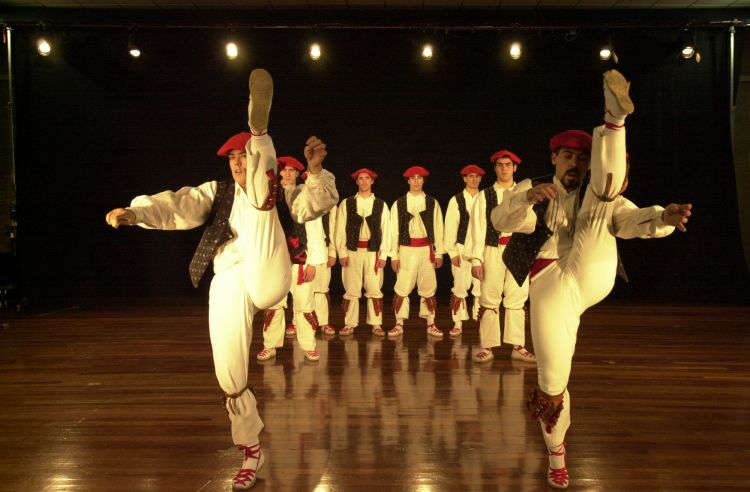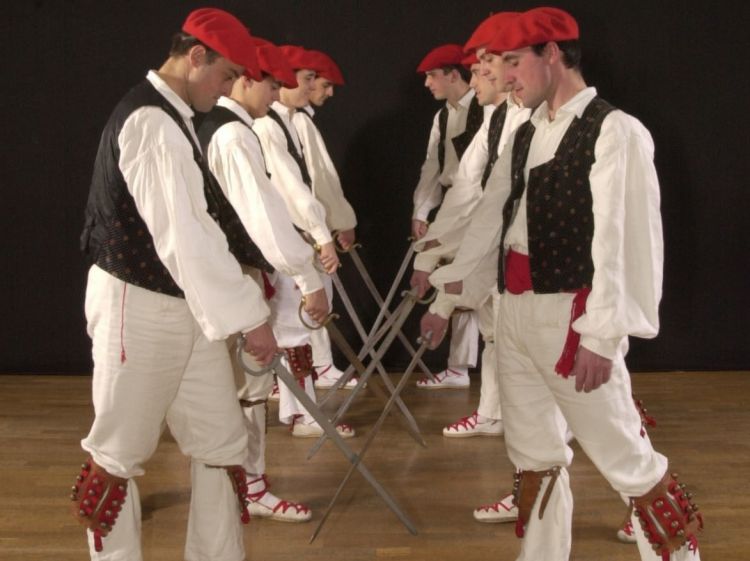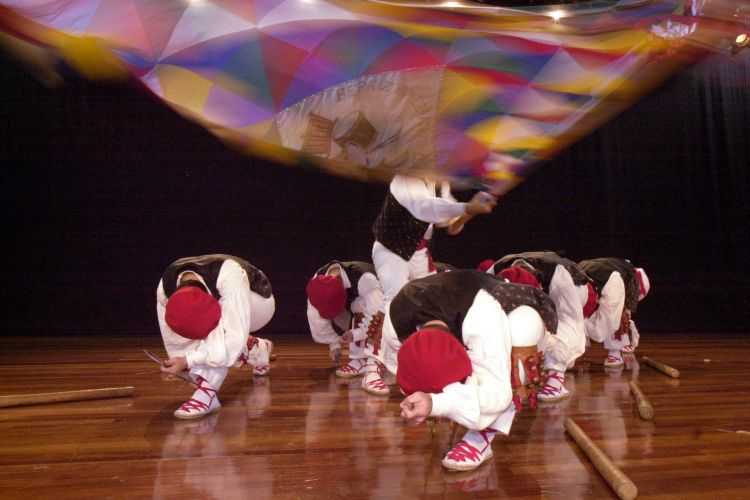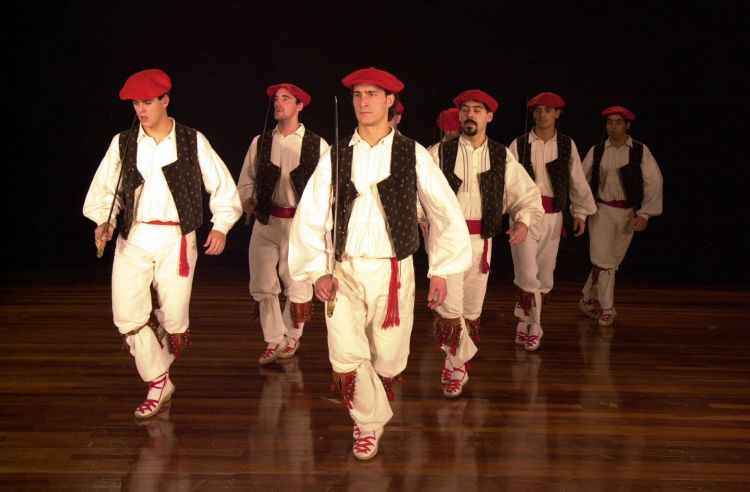Makil Joku
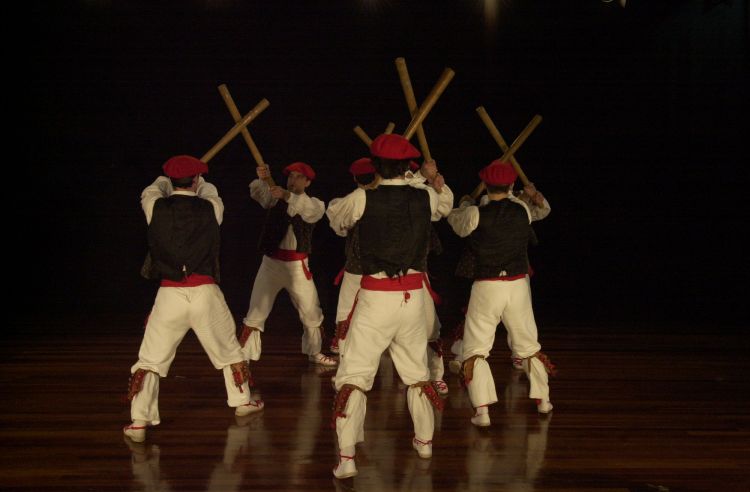
Also known as Makil Dantza, as both names describe perfectly the essence of the exhibition, being a Set or Dance of Sticks or Canes. It is one of the dances included in the wider sequence of the Dantzari Dantza peculiar to the Duranguesado or Durangoaldea de Bizkaia, which we can see in Abadiño, Berritz, Garai, Iurreta, Izurza and Mañaria, although it must have had a wider range in the past and it is very similar to the dances performed in the neighbouring Gipuzkoa (I. IRIGOYEN, Bizkaiko Dantzak, in the Revista Dantzariak, special edition number 1, 1978, pages 20 to 29).
In the same way as the Zortzinango has served as a base, both in steps and in the movements of other dances (Banako, Biñako and Launako) as well as the Dantzari Dantza, the Makil Jokoa maintains the structure of the dances of the sets of swords (Ezpata Joko Nagusia and Ezpata Joko Txikia); in the three we find the formation of eight men, two to a column and armed, here with sticks, in the former with swords, who are going to perform a series of exhibitions and changes of position at the same time as they touch or hit each others' weapons.
We can observe three structurally different parts in the dance of sticks: an introduction, which unites both columns in a line so as to present weapons to the authorities and returns to the formation of twos, followed by a false confrontation using leg movements similar to those in the Ezpata Joko Nagusia. After that with the dancers in their different positions they make blows of defence and attack with the sticks, and the blows crossed in the air and down low allow them to exchange places, in such a way that the rhythm of the music varies until they return to the initial position. Finally, the blows and the steps are faster and the movements of defence and attack are limited to the level of the eyes and knees, in a show of their skill in the use of weapons. If the second one reminds us of the Ezpata Joko Nagusia, the last one follows the structure of the Ezpata Joko Txikia, in such a way that it could have been a division or a joining of one to the another, although we cannot exclude other explanations.

